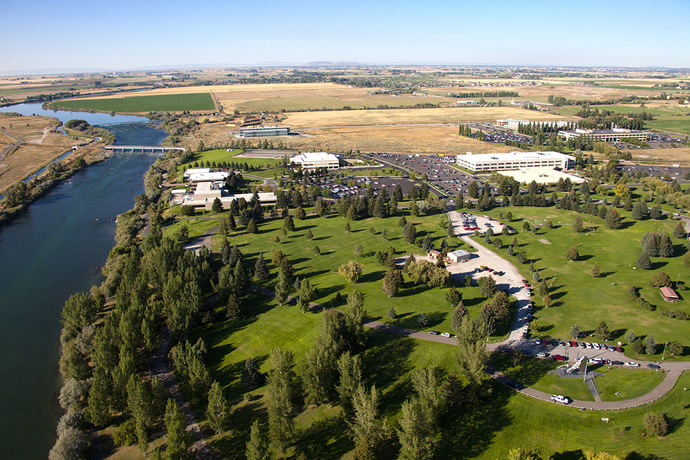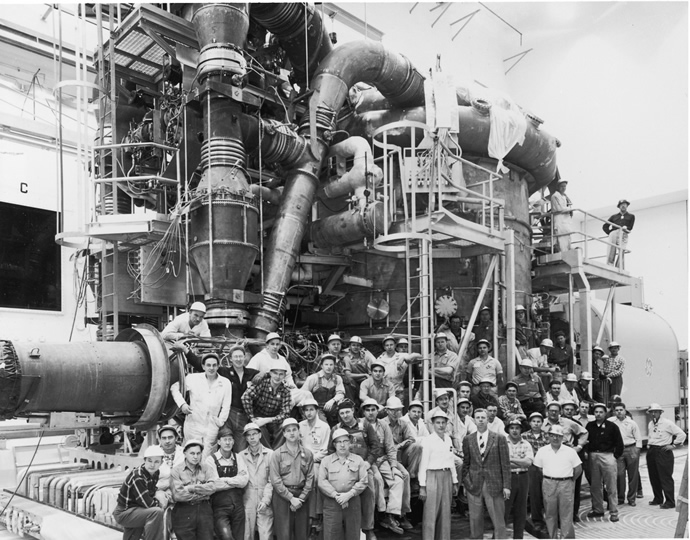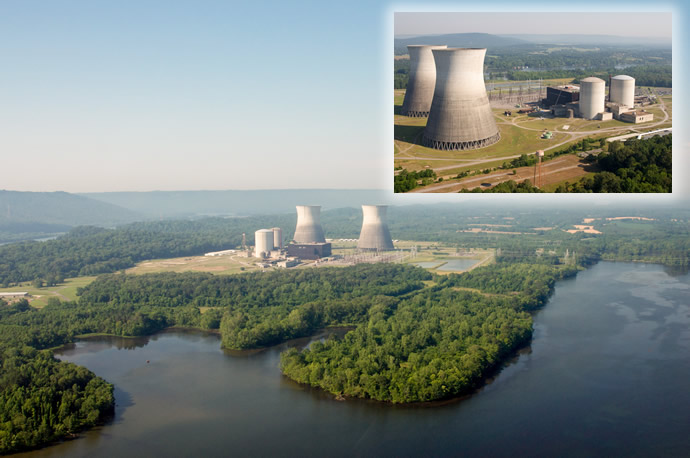There was no sign of fictional antihero Jack Bauer, but a day-long period in February proved a lot can happen in 24 hours.
On February 17, the Tennessee Valley Authority (TVA) announced it was asking the public for input on whether to sell the Bellefonte Nuclear Plant site, a 1,600-acre peninsula located on Guntersville Reservoir near Hollywood, Ala., not far from TVA’s recently closed Widows Creek coal plant that’s now being redeveloped by Google into a renewable-power-supplied data center campus.
“In addition to a nuclear plant use, some of the site infrastructure would support different uses including industrial, commercial and residential development,” TVA announced. The public comment period closes next week on March 18. Written comments may be sent to TVA Executive Vice President and General Counsel Sherry Quirk at sherryquirk@tva.gov, or submitted on the project website at https://www.tva.com/bellefonte.)
The Bellefonte site has received approximately $5 billion of investment over a period of decades since construction began in the 1970s, but it has never produced power.
“As we consider this decision, it is important that we hear from interested stakeholders, potential site developers and the general public,” said TVA President and CEO Bill Johnson. “TVA has been investing at a minimal level to preserve the Bellefonte site for future generating use, should we need it. The 2015 Integrated Resource Plan, completed with public input, indicates it may be two decades before additional large baseload generation is needed. It’s time we answer the question of whether TVA is serving the public well by retaining control of the Bellefonte site, or if others could make more beneficial use of it. And with economic development as a cornerstone of our mission, TVA wants to know if there is an entity interested in investing and creating jobs at this location.”
- Two partially constructed B&W pressurized light water reactors and associated facilities
- 500-kV and 161-kV switchyards
- Office buildings
- Warehouses
- A training center
- Parking lots
- Railroad spurs
- A helicopter landing pad
As for TVA’s other nuclear plants, the corporate agency of the federal government started a scheduled refueling and maintenance outage at its Browns Ferry Unit 3 in Athens, Ala., on Feb. 20. An additional 1,500 TVA and contract employees are supplementing the site’s regular staff during the scheduled outage, and will pursue some 15,500 work activities during the outage at the site.
Browns Ferry 3 has generated more than 18 billion kilowatt-hours of electricity and recorded more than 650 days of continuous operation. It is one of six operational TVA nuclear reactors that collectively supply nearly one-third of all electricity used by more than 9 million people across the Tennessee Valley. A seventh reactor, Watts Bar Unit 2, recently completed construction and fuel load, and is continuing a series of tests to ensure operational readiness. The Nuclear Regulatory Commission last year issued Watts Bar Unit 2 a 40-year operating license. The unit is scheduled to begin commercial operations in 2016.
Idaho Ingenuity
One day after TVA’s announcement, on February 18, the US Department of Energy (DOE) announced that an agreement has been reached to support possible siting of an innovative small modular reactor (SMR) project within DOE’s Idaho National Laboratory (INL) site.

If that’s not enough acronyms for you, the government wants you to know that the site use permit has been granted to Utah Associated Municipal Power Systems (UAMPS), which is working to identify potential locations that may be suitable for building the Carbon Free Power Project (CFPP) for further characterization and analysis.
“Small modular reactors are an important new step toward safe, reliable, carbon-free technology,” said Dr. Franklin (Lynn) Orr, under secretary for science and energy at DOE. “Today’s announcement is a part of the Department of Energy’s ongoing commitment to strengthening nuclear energy’s role in America’s low-carbon future.”

US Department of Energy
“The CFPP is a commercial venture on a federal compound, and the successful deployment of a small modular reactor design would provide US utilities with a greater range of nuclear energy options to reduce air pollution and greenhouse gases,” said the announcement. “Small modular reactors feature compact, scalable designs that are expected to offer a host of safety, construction and economic benefits, and could potentially supply low-carbon baseload energy to small electric grids and locations that cannot support larger reactors.”
The SMR design for the CFPP is being provided by NuScale Power of Portland, Ore., whose concept involves every part of the plant except for civil construction to be modular and factory-built.
“The project will be less construction and more assembly,” explains NuScale. “Analogies to the planned project would be shipbuilding or aircraft assembly. Large portions of the project will be manufactured off-site, brought together, and assembled at the plant location.” To support plant assembly, NuScale is actively evaluating established companies to complete the supply chain.
As the company explains it, “while initially relying upon existing facilities for the first plants, ultimately, as soon as there is a backlog to support it, a purpose-built factory will be constructed specifically to manufacture the NPM [NuScale Power Module]. This fabrication facility will encompass over 1 million square feet and support over 1,000 jobs.”
Meanwhile, in Eastern Idaho, the announcement of the reactor site agreement itself is cause for rejoicing over job creation.

“A project of this size could create over 1,000 jobs in the construction phase alone and over 300 positions when operational,” said Jan Rogers, CEO of Regional Economic Development Corporation for East Idaho (REDI). “The SMR will drive opportunities for highly skilled talent to well-paying jobs. The benefits extend beyond INL’s technical assistance in the project to business partnerships, increasing STEM education, research opportunities, and economic growth.”
Over the decades, more than 50 nuclear reactors have been built and operated at INL — the largest concentration of reactors in the world.
“As the nation’s lead nuclear energy laboratory, Idaho National Laboratory has a vision of the vital role that nuclear energy must play as part of the future clean energy system,” said Mark Peters INL director. “INL served a crucial role in the development of nuclear power and now plays a key role in the advancement and commercialization of next-generation reactors.”


